Expert’s Rating
Pros
- Sharp 6.55-inch display
- Easily replaceable parts
- Solid battery life
- Bold design
- Very good main camera
Cons
- Only two years of core Android updates
- Only IP54 water and dust resistance
- No headphone jack
Our Verdict
With a replaceable battery, screen and speaker, the HMD Skyline is a great mid-range option for anyone who makes short work of their phones. It looks striking and offers decent features for its price, but some may be put off by having only two years of core Android support.
Price When Reviewed
This value will show the geolocated pricing text for product undefined
Best Pricing Today
Best Prices Today: HMD Skyline
$499.99
HMD has spent 2024 establishing itself as a phone brand in its own right, having previously released mobiles under the much more recognisable Nokia branding. The Finnish company has already released the budget Pulse, Pulse Pro and Fusion this summer, as well as the more durable – and more expensive – XR21.
It has now also treated us to the Skyline, which sits in the middle of its range and seeks to provide a strong suite of features for its £399.99/$499.9 price tag. On top of the repairability that characterises the rest of this year’s line, it boasts a 108Mp main camera lens, a Snapdragon 7s Gen 2 chip, and a 6.55in pOLED display with a max 144Hz refresh rate.
Added to a 4,600mAh battery and some user-friendly software, it certainly sounds like it could be a strong contender to be one of the best mid-range phones of the year. However, some drawbacks prevent us from unreservedly recommending it, as we’ll detail below.
Design & Build
- Angular chassis with vivid colours
- Pin-hole selfie camera
- IP54 rating
It may divide opinion, but the HMD Skyline is undoubtedly a striking phone. It comes in three colours: Neon Pink, Twisted Black and Blue Topaz.
Our review sample sported the latter shade, which is a metallic mix of blue with green that shimmers in the light as you turn it. Some may find it a little too bold, but it does at least set the phone apart from some of the more generic mid-range and budget Androids on the market.
It may divide opinion, but the HMD Skyline is undoubtedly a striking phone
The phone’s aluminium frame features sharp, angular corners, whereas its display has more rounded edges and a pin-hole selfie camera at top-centre. Meanwhile, the phone’s rear witnesses a rectangular rear camera module that’s raised nicely against the glass, housing the wide and ultrawide lenses, as well as the flashlight.
The rest of the back is pleasingly minimal, with the HMD logo in the middle and the usual ‘designed in x, made in y’ spiel you often find in small print at the bottom.
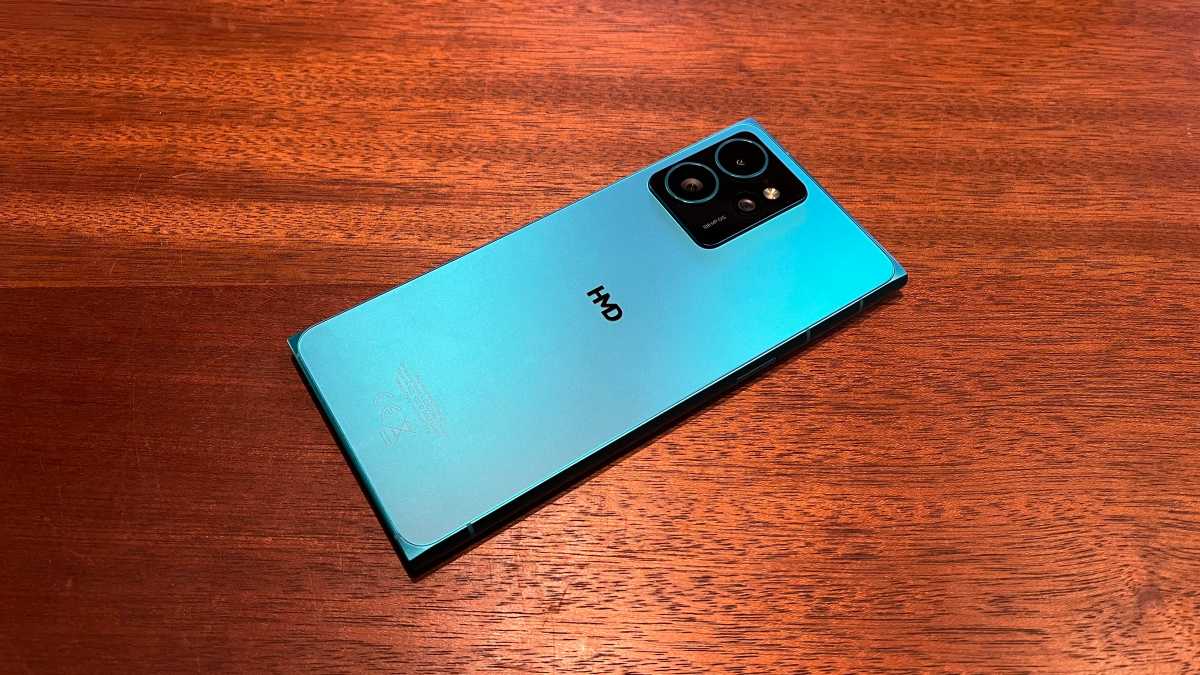
Simon Chandler/Foundry
With a 6.55-inch screen and a weight of 209.5g, the Skyline feels quite substantial to hold. Yet it’s arguable that this only adds to its appeal, giving it a sense of quality that a lighter model would lack. I never found it too heavy or cumbersome, even if the overzealous fingerprint sensor (more on that later) can force you to handle and pocket it in particular ways.
On the other hand, one area where the phone doesn’t seem too premium is durability. Yes, HMD has designed the Skyline to be modular and repairable, but with only an IP54 rating (resistant to splashes of water and dust) you don’t want to be too cavalier with it.
Its screen is manufactured with Gorilla Glass 3, however, although this iteration first emerged in 2013, so it’s a bit behind the times.
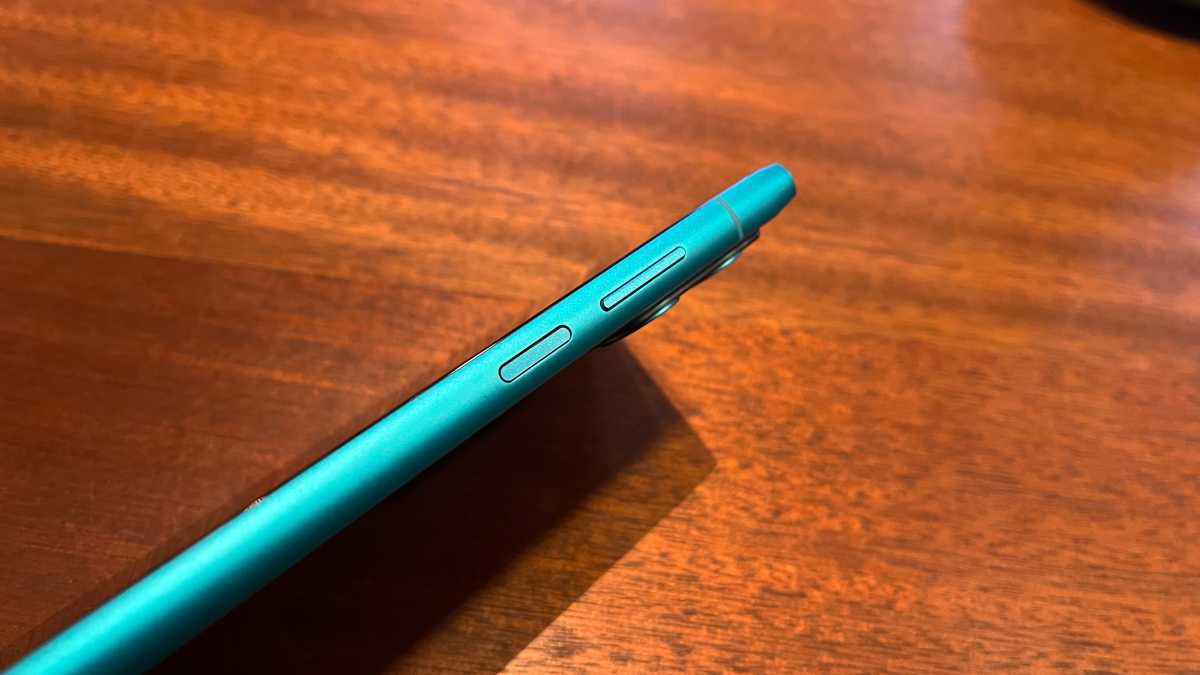
Simon Chandler/Foundry
Screen & Speakers
- 6.55-inch pOLED display
- 144Hz refresh rate
- Stereo speakers
For the price, the Skyline’s 6.55-inch pOLED screen is one of its best features. The ‘p’ in pOLED stands for ‘polymer’, so the display is almost the same as an OLED equivalent, except that it uses a plastic rather than glass substrate. This offers durability advantages and also fits in with HMD’s ethos of providing a long-lasting, high-value mobile.

Simon Chandler/Foundry
In terms of how it performs, the Skyline is an enjoyable phone on which to watch videos, browse the web and gaze at photos. Colours are rich without being spectacular, while the maximum 144Hz refresh rate makes scrolling and navigating remarkably smooth.
It isn’t quite as high-res as some other moderately priced Androids (e.g. OnePlus Nord 4 and Redmi Note 13 Pro), but it does at least match or beat others (e.g. Samsung Galaxy A35 5G).
For the price, the Skyline’s 6.55-inch pOLED screen is one of its best features
Its peak brightness of 1000 nits isn’t quite the highest you can find in this range, but the screen is perfectly viewable in most conditions. Coupled with the relatively large size, I found watching Netflix quite pleasant on the phone.
It obviously wasn’t as cinematic as a good-sized TV (or tablet), but when combined with its capable stereo speakers, it more than suffices if you have nothing larger to watch on.
Specs & Performance
- Qualcomm Snapdragon 7s Gen 2 processor
- 8/12GB RAM and 128GB/256GB storage
- Micro-SD card slot
While the more inexpensive HMD Pulse and Pulse Pro house the underwhelming Unisoc T606 chipset, the Skyline comes equipped with the slightly more capable Qualcomm Snapdragon 7s Gen 2.
The latter appears on such other phones as the Redmi Note 13 Pro, Poco X6 and Motorola Edge 50 Fusion, so it has established a reputation as a dependable workhorse of the mid-range bracket. And when paired with either 8GB or 12GB of RAM, the chipset does a good job of handling the kinds of tasks most people buying a mid-range phone will want it to handle.
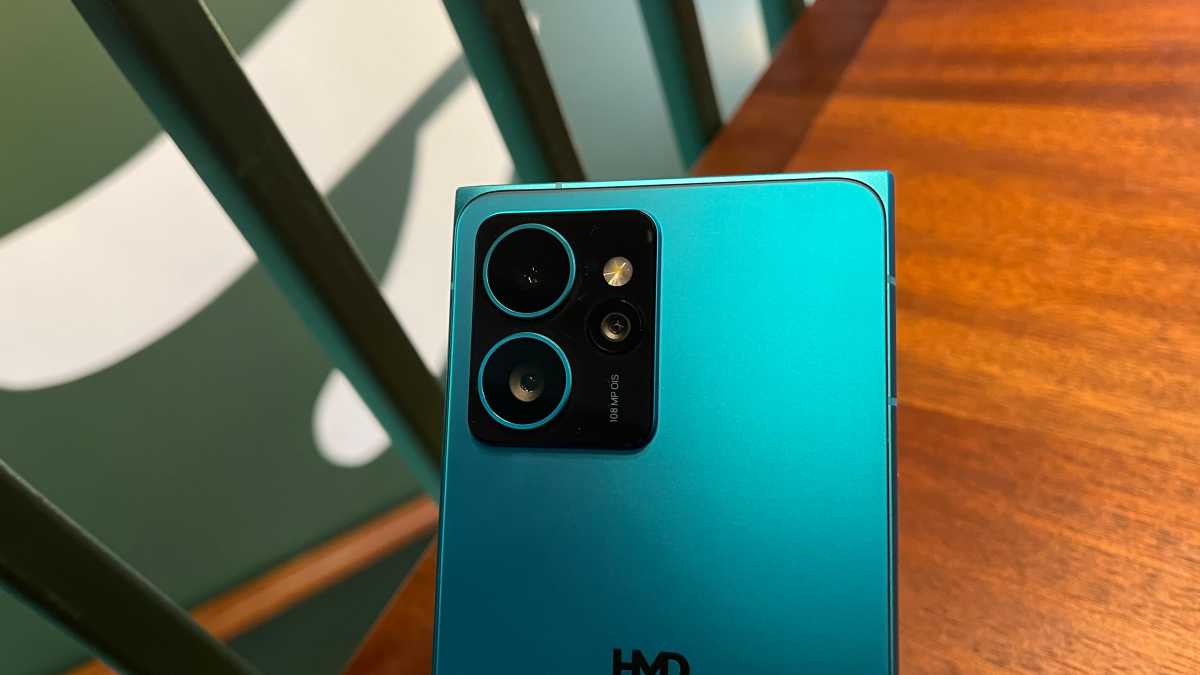
Simon Chandler/Foundry
The phone generally boots up and loads quickly, while you can open and run apps with a minimum of lag. Basic stuff such as reading emails, sending messages on WhatsApp and watching YouTube are more than comfortable for the phone, while most Android games will run smoothly on the device.
Of course, the phone does slow down when playing high-end titles such as Genshin Impact and Arena of Valor, but for the kinds of basic games owners of the Skyline are more likely to play, the phone is serviceable.
The phone generally boots up and loads quickly, while you can open and run apps with a minimum of lag
While the HMD Skyline’s processing power isn’t quite premium-level, it does provide a microSD card slot for you to top up its storage, unlike certain flagship phones (e.g. the Samsung Galaxy S24 series).
By default, it comes with either 128GB or 256GB of internal storage, depending on which model you pay for, so the use of a micro-SD card may be necessary for heavier users. Its slot accepts cards with a capacity of up to 512GB, so most owners should manage fine.
HMD Skyline benchmarks
Cameras
- 108Mp dual pixel main rear camera
- 50Mp telephoto and 13Mp ultrawide lenses
- 50Mp selfie camera
Cameras are one of the primary functions of phones these days, so we’re pleased to report that the Skyline punches above its weight when it comes to photography. It certainly performs better than the other devices HMD has released this year, with its three rear lenses all proving useful to varying degrees.
These three lenses are a 108Mp wide lens, a 13Mp ultrawide and a 50Mp telephoto with 2x optical zoom. This immediately sets it apart from the Pulse series and the HMD Fusion, which came with a maximum of two rear lenses. While extra sensors can be somewhat tokenistic on budget or mid-range phones, I was able to take pleasing pictures with all three.
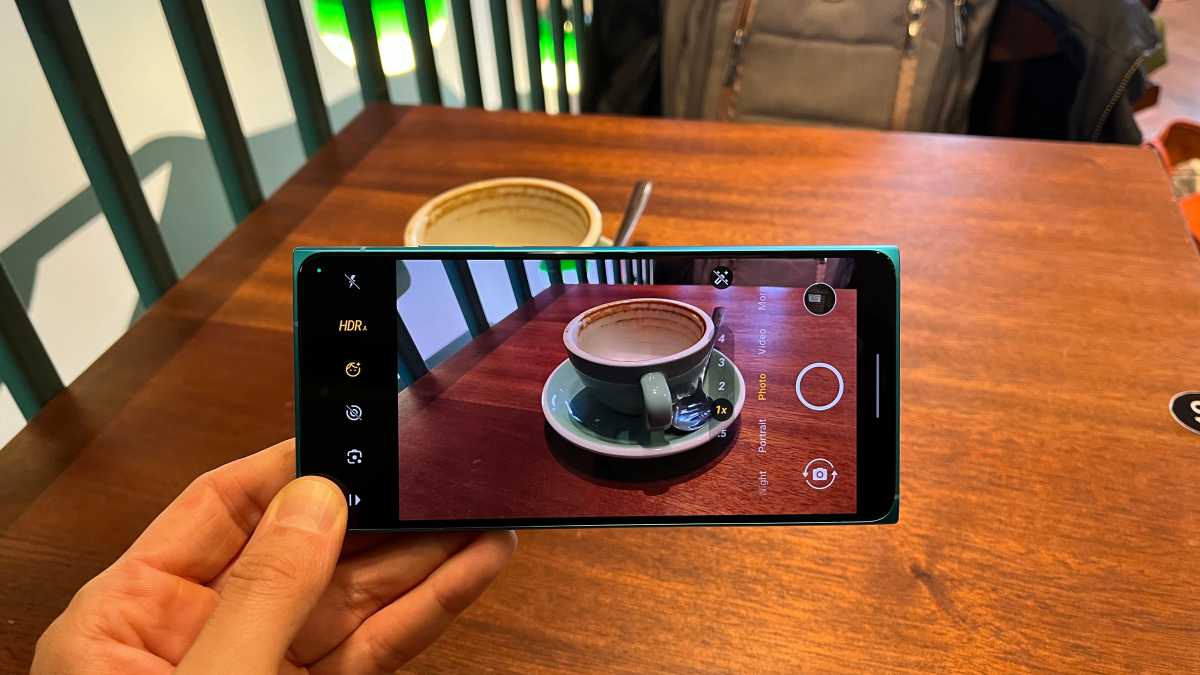
Simon Chandler/Foundry
With the 108Mp wide lens, photos are clear, vibrant and detailed. I found the default saturation and brightness of pics to be nicely balanced, with landscape shots generally looking natural and rich. Much the same goes for indoor and closer shots, with the main lens also able to capture people (and animals) in a flattering yet convincing light.
The Skyline punches above its weight when it comes to photography
And while the telephoto and ultrawide lenses aren’t quite as impressive, they do have their uses. The telephoto lens in particular comes in very handy when needing to capture more distant subjects, with the 2x optical zoom providing enough clarity and colour. You can bump it up to a 3x or 4x digital zoom, if you really need to, but this will bring diminishing returns.
It’s also pleasing to report that the 50Mp front-facing camera does a good job for social media fans. Not only do most selfies usually come out very well, but you can have fun with posture-based triggers for setting off a timer. I’ve never made so many peace and heart signs in all my life.
Battery Life & Charging
- 4,600mAh battery
- 33W wired charging
- 15W wireless charging
For a phone that encourages you to replace its battery in the not-too-distant future, the HMD Skyline manages to last for more than long enough between charges. Its 4,600mAh cell will easily last most users more than a day, even when you take advantage of the super smooth 144Hz refresh rate.
More economical users (particularly those who use the standard 60Hz refresh rate) will probably survive into a second day, so long as they stick to more basic functions. I generally charged every day, although I was putting the phone through its paces, running at 144Hz, testing various Android games and watching some YouTube and Netflix.
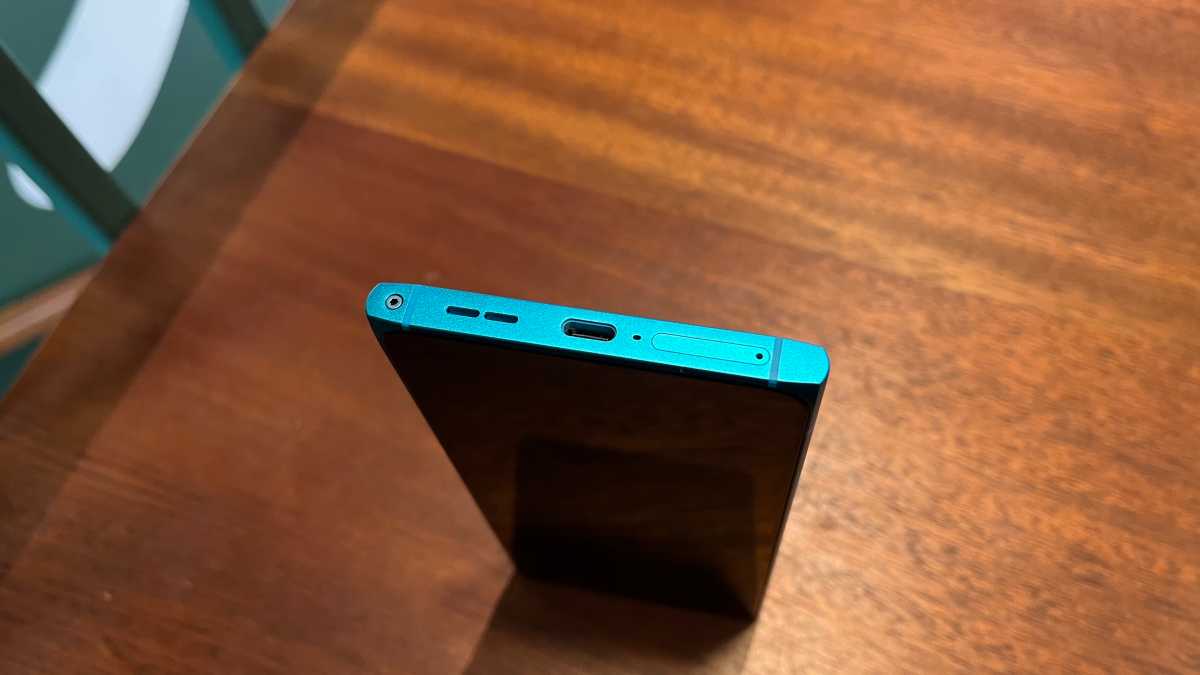
Simon Chandler/Foundry
The phone also supports up to 33W fast charging, although only a USB-C cable is provided out of the box. You will therefore have to either buy an official 30W charger from HMD for £19.99/$29.99 or make do with whatever chargers you have already at home.
In my case, this meant connecting the device to my iMac for the fastest speeds, but it wasn’t particularly impressive. I went from 0% battery to 33% in about half an hour, which is neither bad nor particularly impressive. Still, battery life is decent enough, so you won’t be recharging too often.
the HMD Skyline manages to last for more than long enough between charges
HMD also claims that the Skyline’s battery will go through 800 recharges before you begin to notice any decline in charge capacity. And as we’ve mentioned on numerous occasions, you can quite easily replace the battery once its stamina does begin to wane.
HMD has partnered with the iFixit branch of repair shops in this regard, with new Skyline batteries costing £22.99/$29.99. This is certainly quite less than the cost of a new phone.
Software & Apps
- Android 14
- Two years of core Android upgrades
- Three years of security upgrades
But having praised the HMD Skyline’s repairability, this is where we criticise the phone for undermining one of its main selling points. Yes, it’s great that you can replace the battery, display and other parts of the phone, but its overall longevity is reduced by the fact that it will receive only two years of core Android updates (and three years of security patches).
This is a shame, because some users may not even need to replace their batteries or screens before the device begins missing out on new updates. And while some users may happily stick with the Skyline’s final core software update (Android 16) for quite some time, it would be dangerous to use the phone after security patches stop arriving.
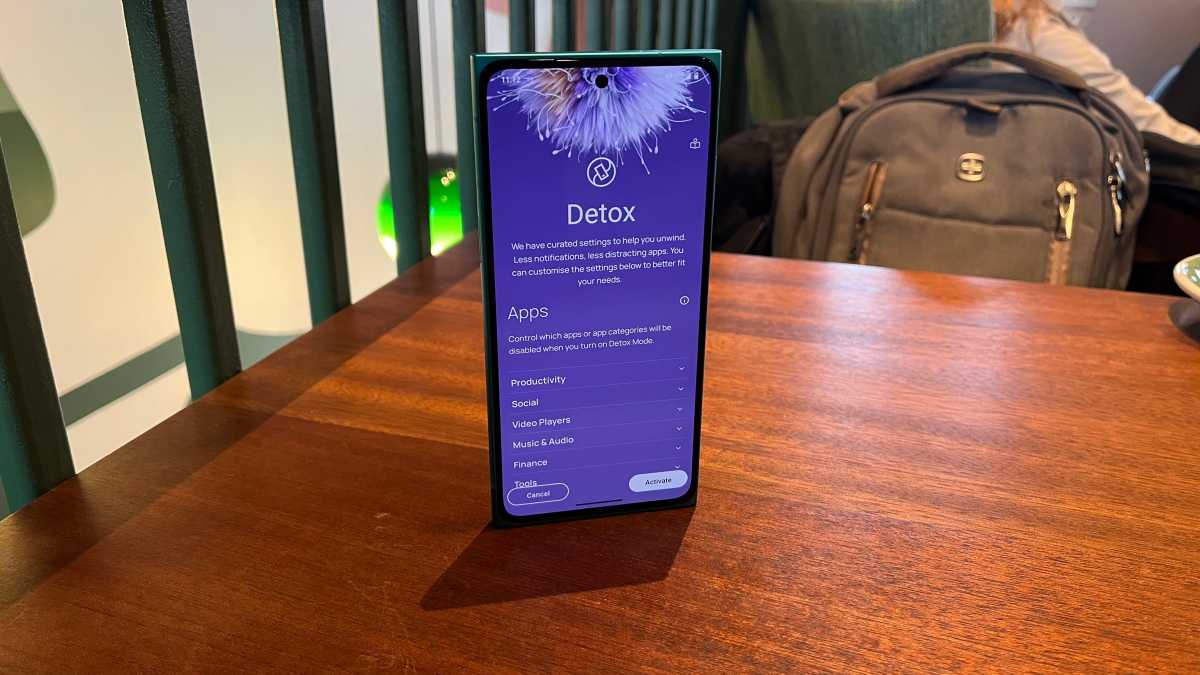
Simon Chandler/Foundry
Having complained about this, it should be stated that HMD’s take on Android has much to recommend it. The home screen’s layout is clear and intuitive, it’s easy to customise screens and the notification shade to your liking, while the side buttons provide several useful shortcuts (e.g. opening the flashlight and camera). There’s also a minimum of bloatware, which is something that can hamper Androids in the budget and mid-range categories.
It’s also worth mentioning HMD’s Detox mode, a zen-like do-not-disturb mode that promises to simplify your relationship with the device. It’s a well-meaning addition that enables you to block notifications and disappear apps for set periods of time. You can personalise it according to which particular apps you want to avoid, with the feature enabling you to basically shut down your entire phone if you want.
HMD’s take on Android has much to recommend it
Conversely, one slight flaw is that the Skyline’s side-mounted fingerprint sensor is a tad oversensitive. It took me a while to teach myself not to put any of my digits on or near it when picking up or putting down the phone, and this can be quite awkward given that the sensor is more or less in the middle of the device’s right-hand side. However, you can deactivate it as a mechanism for unlocking your phone, although arguably this makes it less secure.
Price & Availability
The HMD Skyline has an RRP of £399.99 in the UK, although you will need to pay £479.99 if you want the 8GB/256GB version or £499.99 if you want the 12GB/256GB model.
The Skyline is also available in the US, although the only option available across the Pond is the 8GB/256GB model. This currently retails for $499.99, with HMD not offering any discount through its site at the time of writing.
The phone isn’t available on contract, so you’ll have to buy outright and pair with a SIM deal.
As far as mid-range alternatives go, the OnePlus Nord 4 has an RRP of £429, though it’s not available in the US. For options that are also available there, consider the Samsung Galaxy A35 5G, the Google Pixel 8a and the Nothing Phone (2a) Plus.
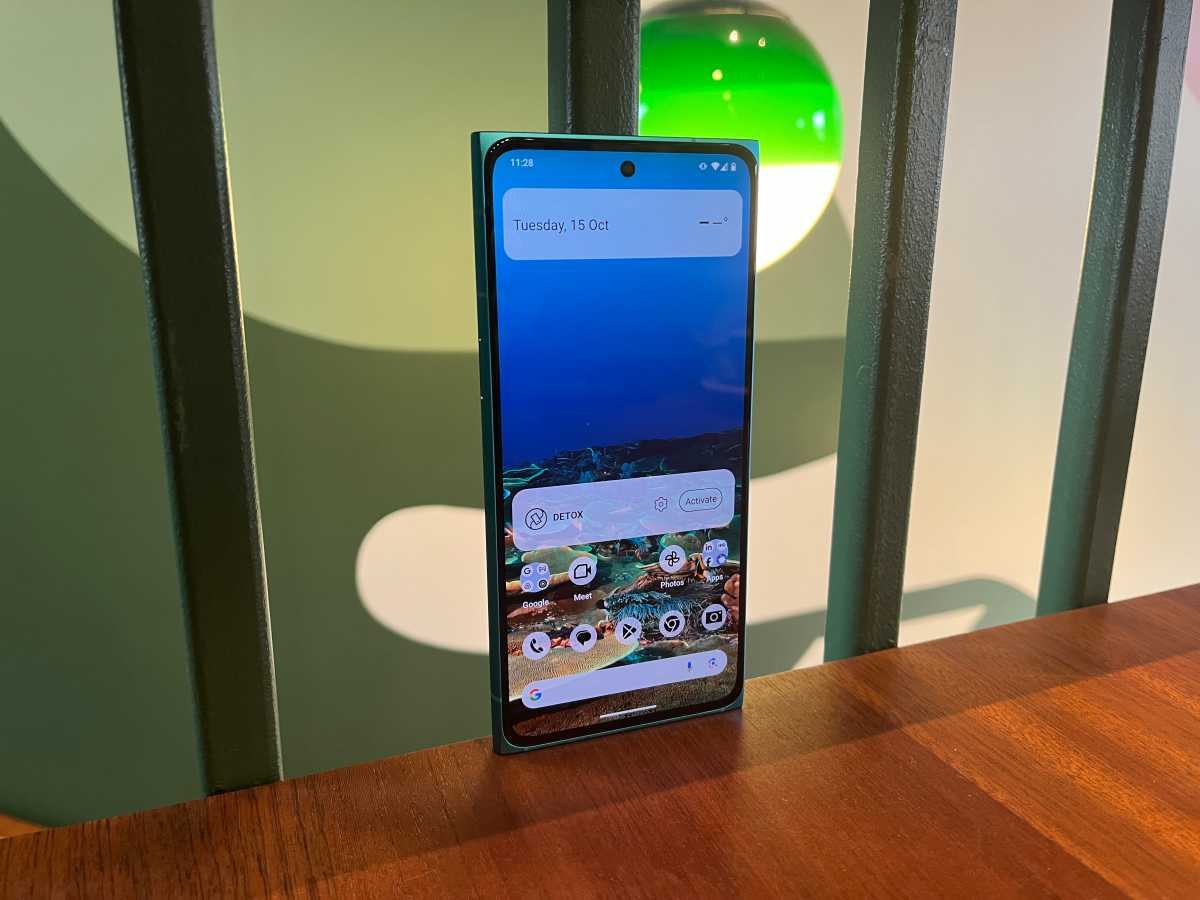
Simon Chandler/Foundry
Should you buy the HMD Skyline?
The HMD Skyline is an ambitious mid-range phone that gets most things right, but also arguably doesn’t quite succeed in its main ambition.
It feels and looks pleasing, has reliable cameras, a long-lasting battery, a smooth display, and capable performance. However, its openness to quick parts replacements is undermined by its short lifespan as far as core Android updates go.
On the other hand, some might counter that mid-range phones aren’t meant to be owned for too long. In this case, owners will find plenty to keep them happy until the cessation of new patches forces them to upgrade.
Specs
- 6.55-inch pOLED (2400×1080) 20:9, 144Hz
- Qualcomm Snapdragon 7s Gen 2
- 8/12GB LPDDR4X RAM
- 128/256GB RAM UFS 4.0 internal storage;
- Cameras:
- 108Mp main/wide sensor
- 50Mp telephoto
- 13Mp ultrawide
- 50Mp front facing
- Side-mounted fingerprint scanner
- Wi-Fi 802.11a/b/g/n/ac 2.4GHz+5GHz
- Dual SIM (Nano-SIM, eSIM)
- Bluetooth 5.2
- 4,600mAh battery
- 33W wired charging, 15W wireless
- 159.8 x 76 x 8.9 mm
- 209.5g








